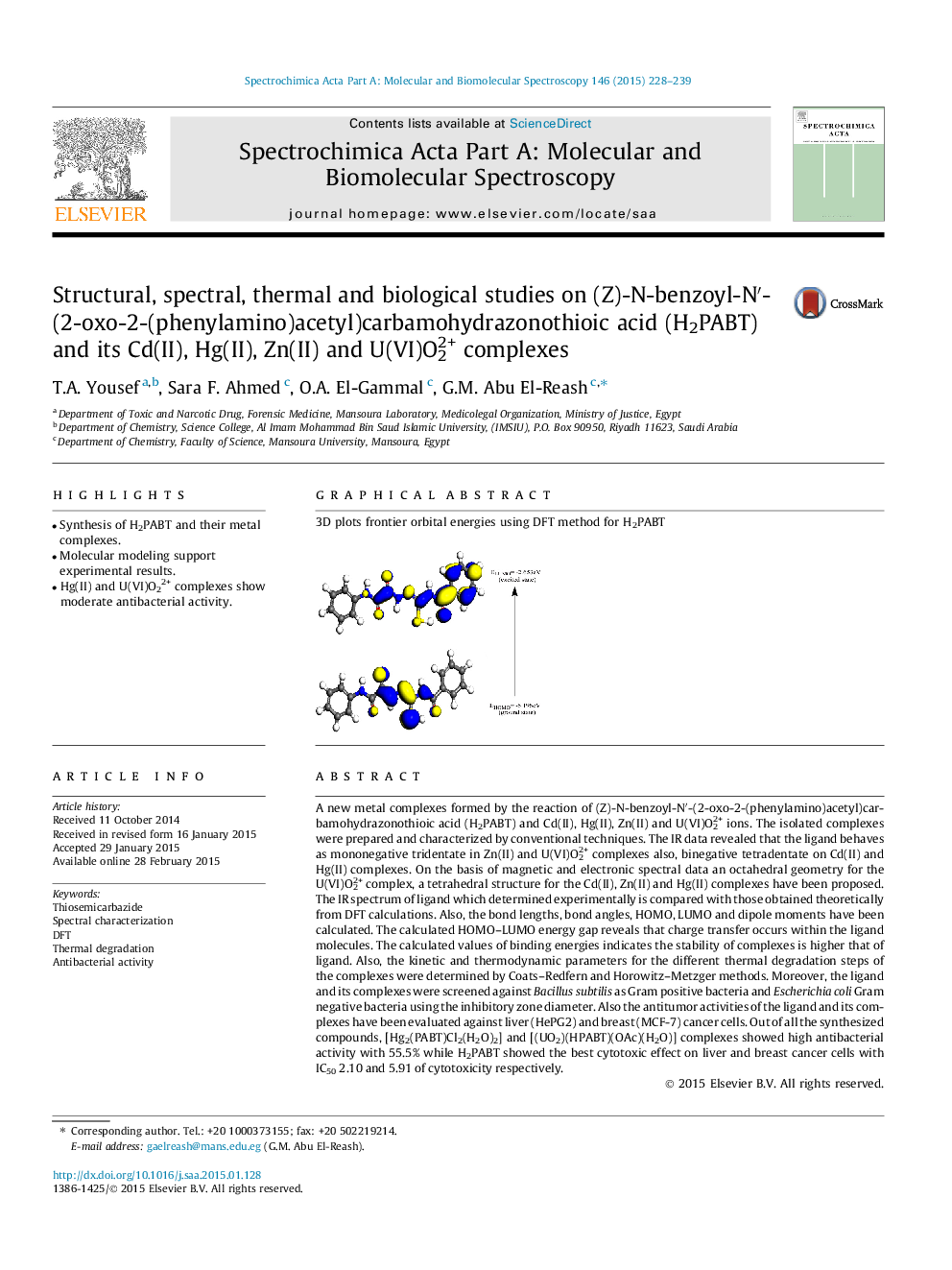| Article ID | Journal | Published Year | Pages | File Type |
|---|---|---|---|---|
| 1231919 | Spectrochimica Acta Part A: Molecular and Biomolecular Spectroscopy | 2015 | 12 Pages |
•Synthesis of H2PABT and their metal complexes.•Molecular modeling support experimental results.•Hg(II) and U(VI)O22+ complexes show moderate antibacterial activity.
A new metal complexes formed by the reaction of (Z)-N-benzoyl-N′-(2-oxo-2-(phenylamino)acetyl)carbamohydrazonothioic acid (H2PABT) and Cd(II), Hg(II), Zn(II) and U(VI)O22+ ions. The isolated complexes were prepared and characterized by conventional techniques. The IR data revealed that the ligand behaves as mononegative tridentate in Zn(II) and U(VI)O22+ complexes also, binegative tetradentate on Cd(II) and Hg(II) complexes. On the basis of magnetic and electronic spectral data an octahedral geometry for the U(VI)O22+ complex, a tetrahedral structure for the Cd(II), Zn(II) and Hg(II) complexes have been proposed. The IR spectrum of ligand which determined experimentally is compared with those obtained theoretically from DFT calculations. Also, the bond lengths, bond angles, HOMO, LUMO and dipole moments have been calculated. The calculated HOMO–LUMO energy gap reveals that charge transfer occurs within the ligand molecules. The calculated values of binding energies indicates the stability of complexes is higher that of ligand. Also, the kinetic and thermodynamic parameters for the different thermal degradation steps of the complexes were determined by Coats–Redfern and Horowitz–Metzger methods. Moreover, the ligand and its complexes were screened against Bacillus subtilis as Gram positive bacteria and Escherichia coli Gram negative bacteria using the inhibitory zone diameter. Also the antitumor activities of the ligand and its complexes have been evaluated against liver (HePG2) and breast (MCF-7) cancer cells. Out of all the synthesized compounds, [Hg2(PABT)Cl2(H2O)2] and [(UO2)(HPABT)(OAc)(H2O)] complexes showed high antibacterial activity with 55.5% while H2PABT showed the best cytotoxic effect on liver and breast cancer cells with IC50 2.10 and 5.91 of cytotoxicity respectively.
Graphical abstract3D plots frontier orbital energies using DFT method for H2PABTFigure optionsDownload full-size imageDownload as PowerPoint slide
